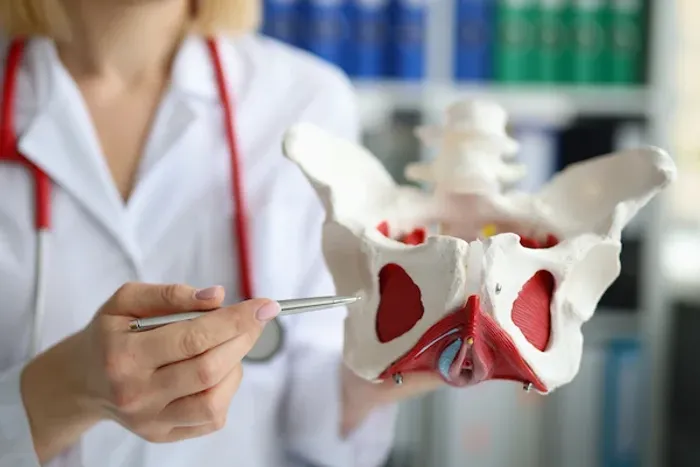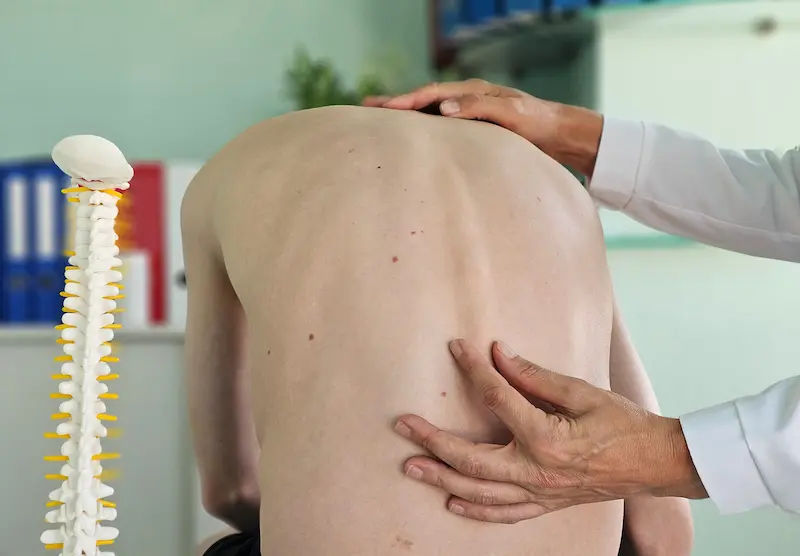Understanding Robotic-Assisted Pelvic Prolapse Surgery: A Modern Solution
Discover how robotic-assisted pelvic prolapse surgery offers a minimally invasive solution, with less pain, faster recovery, and effective repair for pelvic organ prolapse.


Introduction
Pelvic organ prolapse (POP) is a common health condition that many women experience, but few feel comfortable discussing. It occurs when the muscles and tissues supporting the pelvic organs weaken, causing organs like the bladder, uterus, or rectum to bulge into the vagina. While it can be unsettling, it's important to know that POP is highly treatable. For women who require surgical intervention, technological advancements have revolutionised the options available. Robotic-assisted pelvic prolapse surgery has emerged as a leading minimally invasive technique, offering significant benefits over traditional open surgery. This article will serve as your comprehensive guide, demystifying what pelvic prolapse is, exploring the role of robotic technology in its repair, and walking you through the entire process—from deciding if it's right for you to what you can expect during recovery. Our goal is to empower you with knowledge so you can have informed conversations with your healthcare provider.
What is Pelvic Organ Prolapse (POP)?
Pelvic organ prolapse is not a disease, but rather a description of an anatomical condition. Think of your pelvic organs—the bladder, uterus, and rectum—being held in place by a supportive "hammock" of muscles and connective tissue known as the pelvic floor. When this hammock stretches or weakens, the support fails, and the organs can descend or "prolapse" into the vaginal canal.
Understanding the Pelvic Floor
The pelvic floor is a complex group of muscles that acts like a sling. It supports your bowel and bladder, helps with sexual function, and is crucial for core stability. Factors like childbirth, aging, obesity, and chronic constipation can put excessive strain on this structure, leading to weakening over time.
Common Types and Symptoms of Prolapse
There are different types of prolapse, named after the organ that is descending:
Cystocele: Bladder prolapse (most common).
Rectocele: Rectum prolapse.
Uterine Prolapse: Descent of the uterus.
Enterocele: Small intestine prolapse.
Symptoms vary but often include a feeling of pressure or fullness in the vagina, a sensation of something "falling out," lower back pain, and issues with bladder or bowel function, such as incontinence or difficulty emptying.
What Causes the Pelvic Floor to Weaken?
The primary cause is often trauma to the pelvic floor muscles. Vaginal childbirth, particularly multiple births or deliveries of large babies, is a major factor. Other contributors include menopause (due to decreased oestrogen), chronic coughing (from smoking or asthma), repetitive heavy lifting, and obesity, which increases constant pressure on the pelvic floor.
Consult a Urogynaecologist for the best advice
Treatment Options for Pelvic Prolapse: From Conservative to Surgical
Not every case of prolapse requires surgery. The best treatment depends on the severity of your symptoms, the type of prolapse, and your overall health.
Non-Surgical Management (Pessaries, Physical Therapy)
For mild to moderate cases, non-surgical approaches are always the first line of defense. A pelvic floor physical therapy program can teach you exercises (like Kegels) to strengthen the muscles. Another common option is a pessary—a silicone device that is inserted into the vagina to provide internal support for the prolapsed organs. These are effective for many women who wish to avoid or delay surgery.
When is Surgery the Recommended Path?
Surgery is typically considered when symptoms are significantly impacting your quality of life, conservative treatments have failed, or the prolapse is severe. The goal of surgery is to restore the normal anatomy and relieve symptoms. If you are experiencing persistent discomfort that limits your daily activities, it's crucial to consult a specialist, such as a urogynaecologist, to discuss your options. If symptoms persist beyond two weeks, consult a doctor online with Apollo24|7 for further evaluation.
The Rise of Robotic-Assisted Surgery in Gynaecology
The advent of robotic systems, most notably the da Vinci surgical system, has transformed complex gynaecological procedures. This technology is not a robot operating on its own; rather, it's a sophisticated tool that enhances the surgeon's capabilities.
How Does Robotic Surgery Work? The Surgeon's Console and Patient-Side Cart
The system consists of a surgeon's console and a patient-side cart with four interactive robotic arms. The surgeon sits at the console, viewing a high-definition, magnified 3D image of the surgical site. The system translates the surgeon's hand, wrist, and finger movements into precise, real-time movements of tiny instruments inside your body. This allows for operations through a few small incisions (about 1-2 cm each).
Key Advantages: Precision, 3D Vision, and Enhanced Dexterity
The benefits of robotic surgery over laparoscopic surgery are substantial. The 3D visualisation provides unparalleled depth perception. The robotic instruments have a greater range of motion than the human wrist, allowing for delicate maneuvers in the confined space of the pelvis. This enhanced precision is critical when working near delicate structures like blood vessels, nerves, and the bladder.
A Deep Dive into Robotic Prolapse Repair Procedures
The most common and effective robotic-assisted procedure for advanced prolapse is the sacrocolpopexy.
Robotic Sacrocolpopexy: The Gold Standard for Apical Prolapse
A sacrocolpopexy is considered the "gold standard" for repairing prolapse of the vaginal apex (the top of the vagina, which can occur after a hysterectomy). In this procedure, the surgeon uses a synthetic mesh (a supportive graft) to suspend the top of the vagina to the sacrum (the tailbone). The robotic approach allows the surgeon to place this support with exceptional accuracy through small abdominal incisions, leading to very high success rates of robotic pelvic floor repair and durability.
Addressing Cystocele and Rectocele with Robotic Assistance
While sacrocolpopexy addresses the top of the vagina, robotic surgery for cystocele (anterior repair) and rectocele (posterior repair) can also be performed concurrently. The surgeon can reconstruct the weakened layers between the vagina and bladder or rectum, restoring support and alleviating associated symptoms like bladder pressure.
The Patient Journey: From Consultation to Full Recovery
Understanding what to expect can significantly reduce anxiety.
What to Expect Before Your Robotic Surgery
Your pre-operative workup will include a detailed discussion with your surgeon, a physical exam, and possibly imaging tests like an ultrasound. You may be advised to stop certain medications, and you will be given instructions about fasting before the procedure.
The Day of Surgery: A Step-by-Step Walkthrough
You will receive general anaesthesia. The surgeon will make a few small incisions for the robotic arms and the camera. Carbon dioxide gas is used to inflate the abdomen, creating space to work. The surgeon then performs the procedure from the console. The entire surgery typically takes 2-4 hours.
The Recovery Timeline: Hospital Stay to Returning to Normalcy
One of the biggest advantages of this minimally invasive approach is the recovery time for robotic prolapse surgery. Most patients stay in the hospital for one night. You can expect to return to light activities within 1-2 weeks, but full recovery, including heavy lifting and strenuous exercise, takes about 6-8 weeks. Your doctor will provide specific guidelines.
Weighing the Pros and Cons: Is Robotic Surgery Right for You?
Benefits of a Minimally Invasive Approach
Minimally invasive surgery offers several advantages over traditional procedures, such as:
Less Pain: Smaller incisions mean significantly less post-operative pain.
Reduced Blood Loss: Precision leads to minimal bleeding.
Shorter Hospital Stay: Often just one night.
Quicker Return to Normal Activities: Compared to open surgery.
Superior Cosmetic Results: Tiny scars instead of a large abdominal incision.
Potential Risks and How They Are Mitigated
As with any surgery, risks include infection, bleeding, and injury to surrounding organs (bladder, bowel). There are also specific risks related to the use of mesh. However, these risks are generally lower with robotic surgery due to the enhanced visualisation and precision. It is crucial to choose an experienced, high-volume surgeon to minimise these risks.
Candidacy: Who is an Ideal Candidate for this Procedure?
Ideal candidates are generally women with symptomatic, advanced prolapse who are in good overall health. It may not be suitable for women with certain complex medical conditions or those who have had extensive prior abdominal surgery. If your condition does not improve after trying conservative methods, book a physical visit to a doctor with Apollo24|7 to discuss surgical candidacy.
Conclusion
Living with the discomfort and worry of pelvic organ prolapse can be challenging, but you don't have to accept it as an inevitable part of life. Modern medicine, particularly the advancements in robotic-assisted pelvic prolapse surgery, offers a path to reclaiming your comfort and quality of life. This sophisticated approach combines the goal of effective, long-lasting repair with the significant benefits of a minimally invasive technique: less pain, faster recovery, and excellent outcomes. By understanding the procedure, the technology behind it, and the realistic expectations for recovery, you are taking a powerful first step. Armed with this knowledge, you can confidently engage with a healthcare provider to determine if this innovative solution is the right choice for your individual journey toward better pelvic health.
Consult a Urogynaecologist for the best advice
Consult a Urogynaecologist for the best advice

Dr Anubhav Chittari
General Surgeon
3 Years • MBBS, M.S GENERAL SURGERY
Bengaluru
PRESTIGE SHANTHINIKETAN - SOCIETY CLINIC, Bengaluru

Dr. Binay Agarwal
General and Laparoscopic Surgeon
15 Years • MBBS, MS General Surgery
North Dumdum
Dum Dum Medical Centre, North Dumdum

Dr. Deepak Thakur
General Surgeon
10 Years • MBBS, MS General Surgery
Patna
Health Care Clinic, Patna

Dr Venu Kumar K N
Vascular Surgeon
10 Years • MBBS, MS (Surg), DNB (Surg), M.Ch (Vas Surg), DrNB (Vas Surg)
Bengaluru
Apollo Clinic, JP nagar, Bengaluru
Dr. Deepak G
General Surgeon
2 Years • MBBS, MS
Bengaluru
A.V.S Clinic, Bengaluru
More articles from General Medical Consultation
Frequently Asked Questions
1. How long does the mesh last in a robotic sacrocolpopexy?
The synthetic mesh used is designed to be a permanent support. Studies have shown that the repair is highly durable, with success rates often exceeding 90% even after 5-7 years.
2. Will I need a hysterectomy as part of the prolapse surgery?
Not always. While a hysterectomy is sometimes performed if the uterus is prolapsed, a procedure called a hysteropexy can be done robotically to suspend the uterus without removing it. The best approach depends on your specific anatomy and desires.
3. What is the difference between laparoscopic and robotic surgery for prolapse?
While both are minimally invasive, robotic surgery provides surgeons with 3D high-definition vision, instruments that bend and rotate far greater than the human wrist, and enhanced ergonomics. This often allows for greater precision, which can be beneficial in complex reconstructive surgeries.
4. Is robotic surgery covered by insurance?
In most cases, yes. Robotic-assisted pelvic prolapse surgery is a recognised and accepted surgical technique for treating a medical condition. However, coverage can vary, so it's important to check with your specific insurance provider.
5. When can I resume sexual intercourse after surgery?
Most surgeons recommend waiting until after your post-operative check-up, typically around 6-8 weeks, to allow for complete internal healing.




